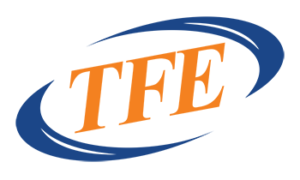3 things you should know about ESSER funding
The ESSER Fund (Elementary and Secondary School Emergency Relief Fund) is designed to help K-12 schools address learning gaps and other challenges brought on by the COVID-19 pandemic. It’s also intended to enable schools to invest in tools to increase resilience, allowing them to offer an effective and equitable learning environment, even in catastrophic disruption.
ESSER funding can be used for different purposes. For example, schools can pay for hardware, software, and other technology needs that will help them respond to the pandemic. It can also be used to improve facilities as children return to in-person learning.
The bottom line is that this federal funding for schools can be a pivot point for U.S. public education. However, it’s up to the schools to decide how best to use the funds and translate billions in financial support into a better learning environment for students. Here’s what every educator, administrator, and decision-maker should know about ESSER funding.
ESSER funds include three rounds of funding
ESSER stimulus funding includes approximately $190 billion in funding in total.
- March of 2020, Congress set aside $13.5 billion of the initial CARES Act (Coronavirus Aid, Relief, and Economic Security) for elementary and secondary schools.
- December of 2020, the Coronavirus Response and Relief Supplemental Appropriations Act, 2021 (CRRSA) was signed into law, providing an additional $54.3 billion for the ESSER Fund (known as the ESSER II fund).
- March of 2021, Congress approved legislation that allocated another $122.7 billion toward K-12 schools (known as the ESSER III fund).
Most of the money will go directly to school districts and other local educational agencies
Most of the ESSER funding, 90 percent of what states receive, will go directly to local educational agencies (LEAs). State educational agencies (SEAs) can use 10 percent of it to support remote learning, expand technological capacity, and ensure disadvantaged populations are supported.
The state educational agencies have one year from the date of the ESSER award to grant the funds to individual LEAs. Any funds left over will go back to the Department of Education to be redistributed.
Each state will receive a different amount. You can view how much your state will receive from ESSER I, II, and III funding by visiting the National Conference of State Legislatures Relief Fund Table.
Local leaders have a lot of flexibility
Determining how to use the funds is largely up to the educational administrators and state and local leaders. When announcing the funding in April of 2020, former U.S. Secretary of Education Betsy DeVos said, “Now is the time to truly rethink education and to get creative about how we meet each student’s unique goals…I encourage them to focus on investing in the technology, distance learning resources, training, and long-term planning tools that will help education continue…no matter where learning takes place.”
Here’s a look at some of the potential ways schools districts can use the funds:
- Coordinate preparedness and response efforts between relevant agencies and departments.
- Pay for activities and resources that will support the learning experience of low-income students, English learners, children with disabilities, foster care youth, and other populations that have unique needs.
- Invest in supplies to keep schools and other educational facilities clean, sanitized, and healthy.
- Educational technology, including assistive technology and adaptive equipment.
Make the most of ESSER funds with a tailored strategy for educational technology
We’ve been partnering with local agencies and education in Texas for over 20 years. Our teams have also been working directly with schools, helping to set up the right IT to facilitate remote learning during the pandemic.
Whether you’re looking for hardware, network upgrades, cloud hosting services, or any other IT resources and tools to support your students, we can help. Reach out to TFE Connect for help with all your school’s technology needs.










